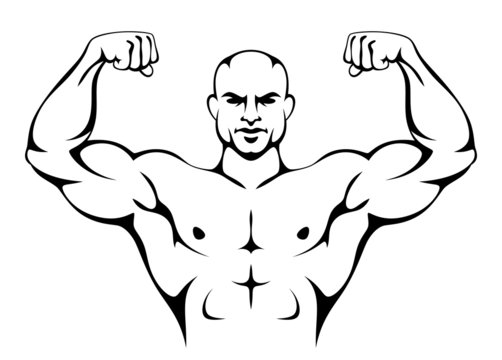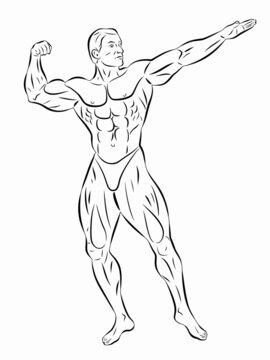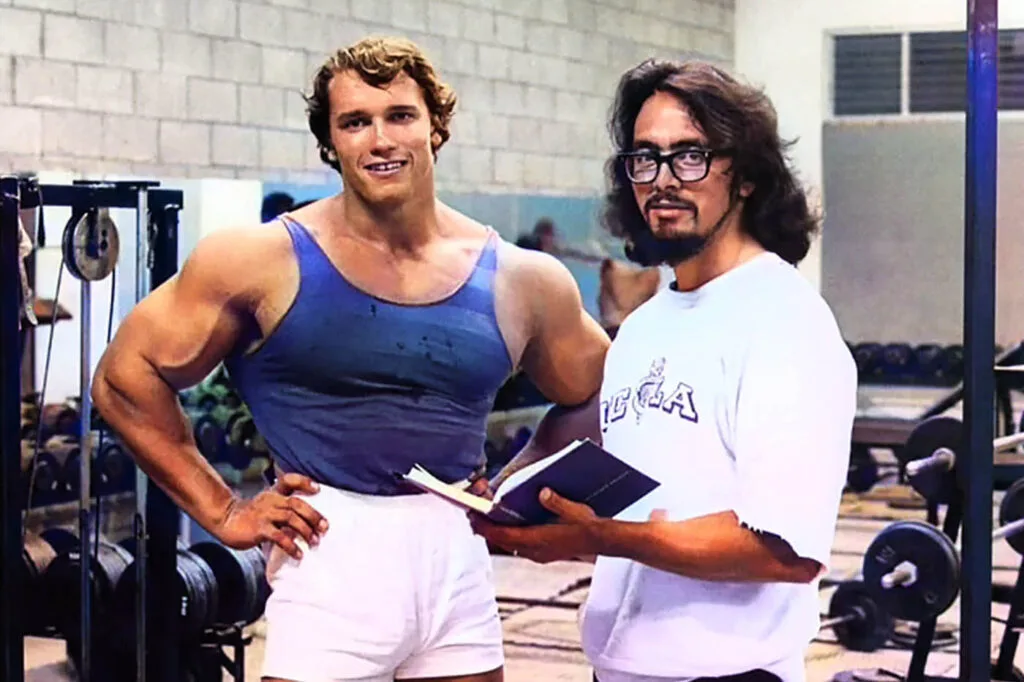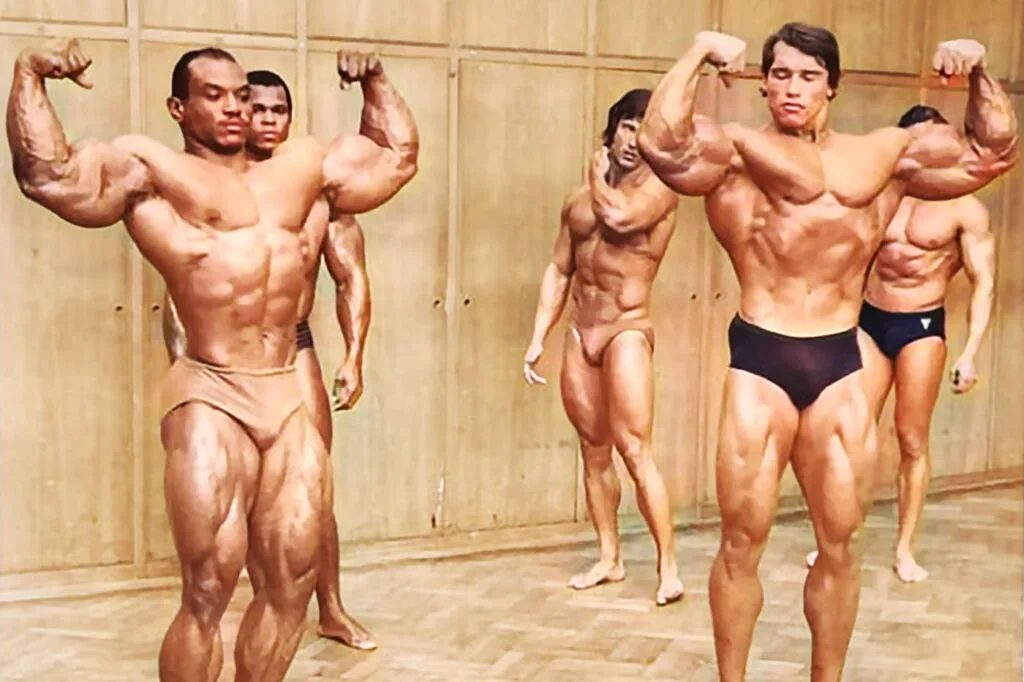To draw a bodybuilder, start by outlining the basic muscle groups and then add details and shading. Focus on proportion and symmetry to achieve a realistic look.
Drawing a bodybuilder can be an exciting challenge for artists. Begin by sketching a basic skeletal structure to ensure proper proportions. Highlight the major muscle groups, such as the chest, arms, and legs. Use reference images to capture the definition and symmetry of a bodybuilder’s physique.
Pay special attention to the contours and shading to give depth and realism. Practice is key, so keep refining your technique to improve. Drawing a bodybuilder not only enhances your artistic skills but also deepens your understanding of human anatomy.
Introduction To Bodybuilder Anatomy
Mastering the art of drawing a bodybuilder requires understanding their muscular structure. Focus on key muscles like biceps, triceps, and pectorals. Accurate anatomy enhances the realism of your sketches.
Importance Of Anatomy
Knowing bodybuilder anatomy helps in drawing them correctly. Muscle groups must look realistic. Proportions are key to a good drawing. Understanding the body structure helps in accurate representation.
Basic Structure
Start with a basic skeleton outline. Add circles for joints. Connect them with lines for bones. This helps in positioning the body correctly. After that, start adding muscles over the skeleton. Focus on the main muscle groups like arms, chest, and legs.
Essential Drawing Tools
Mastering the art of drawing a bodybuilder requires essential tools like quality pencils, erasers, and sketchpads. Ensure accurate muscle detail with fine-tipped pens and shading tools.
Sketching Materials
Start with a good quality sketchbook. Pencils are the basic tool, ranging from soft to hard. Erasers help fix mistakes. Use blending stumps for smooth shading. Charcoal sticks are great for deep shadows. Graphite pencils add fine details. Keep a sharpener handy. Rulers help with proportions. Colored pencils add life to your drawing.
Digital Tools
A graphics tablet offers precision. Styluses provide a natural feel. Use drawing software like Photoshop or Procreate. These programs offer brushes and layers. Zoom lets you add small details. Undo options help fix errors. Color pickers make choosing shades easy. Digital storage keeps your work safe. Online tutorials offer extra help.
Understanding Muscle Groups
The chest muscles are very important. They give strength and shape. The biceps are the muscles on the front of the arm. They are easy to see when flexed. The triceps are on the back of the arm. They help in pushing movements. The shoulders or deltoids are like caps on the arms. They make the upper body look wide. The back muscles help in pulling actions. They are big and strong. The abs are in the stomach area. They give the body a six-pack look. The legs have many muscles. The quadriceps are on the front. The hamstrings are on the back. The calves are on the lower leg.
- Drawing muscles too big or too small.
- Not showing enough muscle details.
- Forgetting the right muscle shape.
- Ignoring muscle symmetry.
- Overlooking muscle connections.

Credit: m.youtube.com
Drawing The Torso
Master the art of drawing a bodybuilder’s torso by focusing on muscle definition and proportions. Capture the essence of strength with detailed abdominal and chest muscles.
Chest Muscles
Start with a large chest area. Make sure it looks strong and wide. Divide the chest into two main parts. Each part should be rounded. Draw the pectoral muscles with curved lines. Keep the lines smooth and even. Add small details to show muscle definition. Use light strokes first. Darken the lines later for a bold look.
Abdominal Muscles
Below the chest, draw the abdominal muscles. These muscles should be rectangular. Draw six or eight small rectangles. Make sure they are evenly spaced. Each rectangle should be the same size. Use vertical lines to divide them. Add shadows to show depth. Keep the lines clean and sharp. This makes the muscles look more realistic.
Sketching Arms And Shoulders
Draw an oval for the upper arm. Biceps should be rounded and bulging. Triceps sit behind the biceps and are less rounded. Sketch muscle lines to show definition. Keep lines light and build gradually. Use quick, short strokes for better control. Flexed arms show more muscle. Pay attention to the muscle curves.
Shoulders are rounded and sit above the arms. Draw a circle for each shoulder. Connect circles with smooth lines to the arms. Add muscle details to show strength. Use curved lines to show the deltoids. Make sure the shoulders look balanced. Shade lightly to add depth. Keep practicing to improve.

Credit: stock.adobe.com
Defining The Legs
Capturing the powerful legs of a bodybuilder requires attention to muscle definition. Focus on detailing the quadriceps, hamstrings, and calves to create a realistic representation. Emphasize shading and contours to highlight muscle tone.
Thigh Muscles
The thigh muscles are very important. They include the quadriceps and the hamstrings. Quadriceps are on the front of the thigh. Hamstrings are on the back. Draw these muscles with bold lines. Make them look strong and defined. Add some shading to show depth. This will make your drawing realistic.
Calf Muscles
The calf muscles are at the back of the lower leg. They include the gastrocnemius and the soleus. Draw the gastrocnemius with a rounded shape. The soleus is below it. Make the calf muscles look bulky. Add shadows to show muscle definition. This will make the bodybuilder’s legs look powerful.
Adding Details And Textures
Use light and smooth strokes for the skin. Add small lines for fine details. Shadows make the skin look realistic. Use different shades to show depth. Keep the skin texture soft. Avoid harsh lines for a natural look. Blend the shades carefully for a smooth finish. Adding light highlights adds dimension.
Draw muscles with strong and clear lines. Show the muscles’ shape by adding shadows. Use darker shades to show depth. Highlight the muscle peaks with lighter colors. Add small lines to show muscle fibers. Make sure each muscle is distinct. Study real bodybuilders for accuracy. Muscles should look powerful and defined.

Credit: stock.adobe.com
Final Touches And Shading
Start by choosing a light source. The light source helps you decide where the shadows go. Add shadows to the opposite side of the light. Use a soft pencil to shade. Blend the shading with a tissue or finger. This makes the drawing look smooth. Add highlights on the muscles. Use an eraser to create the highlights.
Muscles need to stand out. Draw the outline of each muscle first. Add shading to the muscles. Darken the edges to show depth. Lighten the middle part of the muscle. This makes the muscle look round. Use a fine pencil for detail. Add small lines to show muscle fibers. This adds texture to your drawing.
Common Challenges And Solutions
Drawing a bodybuilder can be hard. The muscles must look balanced. Start with a basic shape. Use circles and lines to map out the body. Make the chest and shoulders broad. Keep the waist narrow. Compare different parts to each other. This helps to keep everything in the right size. Check your drawing often.
Bodybuilders often have strong and active poses. Use action lines to show movement. These lines guide the body. Add details to show muscles flexing. Keep the legs bent and the arms raised. This shows strength and power. Practice by copying photos of bodybuilders. This helps to learn how muscles work.
Practice And Improvement
Mastering the art of drawing a bodybuilder demands consistent practice and keen observation. Focus on muscle structure and proportions to enhance your skills. Regular sketching sessions and studying real-life references will significantly improve your technique.
Regular Sketching
Regular sketching helps improve your drawing skills. Try to sketch different bodybuilders daily. Focus on their muscles and poses. Notice how muscles flex and relax in different positions. Use reference images to guide your sketching. Pay attention to proportions and details. Drawing from life can also be beneficial. Ask a friend to pose or use a mirror.
Reviewing Work
Review your work regularly. Compare your sketches to reference images. Identify areas that need improvement. Self-critique is important. Make notes of your mistakes. Try to correct them in your next sketches. Seek feedback from others. Constructive criticism can help you grow.
Frequently Asked Questions
How Do You Draw A Body Build?
Start with basic shapes to outline the body. Add muscle details and refine proportions. Use references for accuracy.
How Do You Draw A Male Body Shape?
To draw a male body shape, start with a basic skeleton. Add muscle structure, define the torso, and detail arms and legs. Sketch the head last.
How Can I Look Like A Bodybuilder Fast?
To look like a bodybuilder fast, follow a strict workout plan, eat protein-rich foods, stay hydrated, and get enough rest.
How Do You Draw A Muscle Sketch?
To draw a muscle sketch, start with basic shapes to outline the body. Add details to muscles using curved lines. Focus on muscle groups and their connections. Use shading to show depth and definition. Practice observing real muscle anatomy for accuracy.
Conclusion
Mastering the art of drawing a bodybuilder takes practice and patience. Follow the steps outlined for accurate results. Keep refining your skills and soon you’ll create impressive, lifelike bodybuilder sketches. Remember, persistence is key. Happy drawing!











